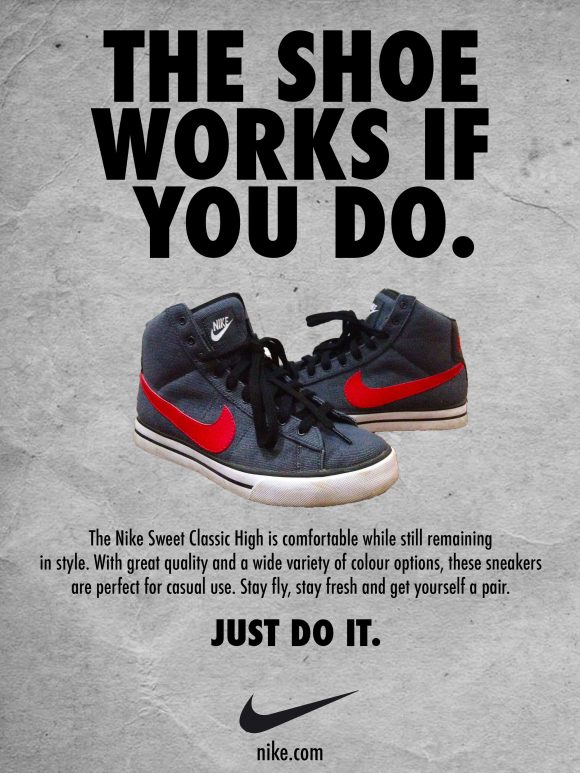A Sneak Peek at COM210 – Theories of Persuasion By: Kayla Loeb, Evelyn Addison, Melanie D’Andrea, Shoshone Truro-Allee
October 19, 2018
Have you ever wondered how some people are incredibly convincing and persuasive? Have you been in a circumstance where you wanted to incline someone to feel a certain way about a topic but couldn’t? If this applies to you, then Theories of Persuasion (COM210) is an excellent course to take. This required course (for School of Communication students) focuses on what influences our attitudes and beliefs, and theories about what motivates us and which ways we perceive/remember a message best. Not only is this course useful, both in and outside of the classroom, it is fascinating to learn about if you have even the slightest interest in communication and/or psychology.
In COM210, you will learn:
- Concept of Persuasion
- Logical and Emotional Appeals
- Social Judgment Theory
- Elaboration Likelihood Model
CONCEPTS OF PERSUASION
Where You’ve Seen This:

Source: thetruth.com
You have seen the each of these characteristics of persuasion all around you, but more specifically, you have most likely seen it in the truth campaign. This campaign chose a shared symbol through their different logos and campaign images. The intent of this campaign is to empower younger generations to “finish it” in regards to ending smoking for good. Just because the campaign has not eliminated smoking for good just yet, does not mean that the campaign has not had an impact on smoking in our country. This specific campaign tackles this issue in a mass communication format because their target audience are the younger generations. Simply put, the truth campaign attempts to change the attitudes of the our youth towards smoking. They are aiming to change the “cool” image that comes with smoking, hoping that it will lead to the end of smoking forever.
LOGICAL AND EMOTIONAL APPEALS
Two main types of persuasive messages are logical appeals, and emotional appeals. Logical appeals rely on the logic and reasoning side of the listener, whereas emotional appeals rely on the emotional reaction and connection one can elicit from their audience. The most frequently targeted emotions are humor and fear. When used correctly, these appeals can leave a lasting impression on your audience and are often an effective method of persuasion.
Where You’ve Seen This:
Emotional appeals are often used in public health campaigns, specifically fear appeals. The purpose of these appeals is to attract attention quickly while simultaneously getting a strong message across. This method works well in public health campaigns because they are able to elicit a moderate level of fear while also providing a solution to the threat. For example, campaigns regarding teen pregnancy may offer a fact such as the number of teens who accidentally get pregnant each year. It will typically have a slogan in some form that relates this number back to the receiver, and then will offer a solution such as birth control or condoms. This makes the receiver aware of the relevance of the danger while also offering a clear and simple preventative measure.
SOCIAL JUDGEMENT THEORY
The Social Judgement Theory pertains to how we evaluate a particular topic based on its current attitudes (O’Keefe, 1990). There is what is called a “latitude” which is a range of attitudes instead of a single point along a continuum. The range goes from:
- Latitude of Acceptance: an attitude of agreeance
- Latitude of Noncommitment: an attitude of indifference
- Latitude of Rejection: an attitude of disagreeance
Whichever attitude your audience holds, it is best to take an incremental approach, or taking small steps to influence them. This is because a boomerang effect can occur, which counteracts your efforts of persuasion and moves your audience into an even further point of rejection.
Where You’ve Seen This:
Let’s say you are working for Planned Parenthood and are put in charge of coming up with a message for an infomercial. Taking a strong pro-choice stance probably isn’t going to be the best idea because there are many in your audience who have a latitude of rejection attitude (are pro-life). By utilizing this theory, it would be most effective to include content about being pro-life, then putting gentle emphasis on your pro-choice message at the end so it will influence your audience to at least reconsider, if not persuade them, to take a more pro-choice stance.
ELABORATION LIKELIHOOD MODEL (ELM)
This model of persuasion was created by Richard E. Petty and John Cacioppo (1980) and describes different ways of processing messages and the attitude change it is predicted to produce. The model begins with whether the receiver chooses to engage in high involvement or low involvement when processing a message. High involvement leads to the central route to persuasion, while low involvement leads to the peripheral route to persuasion. While both routes may lead to persuasion, it is vital to know who your audience is and the attitude outcome you are trying to achieve (lasting change or temporary change).

Source: Nike
Where You’ve Seen This:
In many cases, messages from the same organization are marketed in different ways so that the receiver uses both routes to persuasion. For example, the receiver would use the peripheral route to process Nike’s ad on the bottom. Although the ad has nothing to do with Nike’s products, customers might be persuaded to purchase from them because they are attracted to the message Nike is trying to convey and are influenced by Colin Kaepernick and what he may represent to them. The Nike ad on the right uses a different approach. This ad is information-based and focuses on the details of their product. Therefore, the receiver would be using the central route to persuasion.

source: Nike
We hope that this brief overview of COM210 will persuade you to be excited about taking it!


